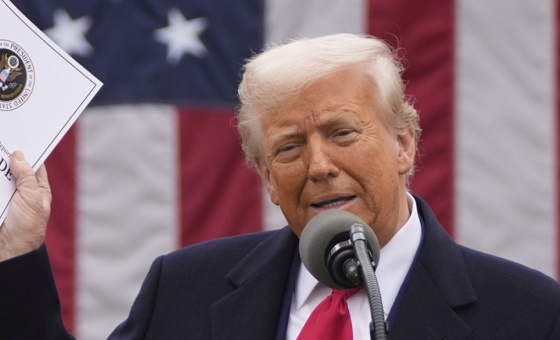This is the last article you can read this month
You can read more article this month
You can read more articles this month
Sorry your limit is up for this month
Reset on:
Please help support the Morning Star by subscribing here
Before he became a percussion pioneer of the avant-garde, the Oklahoma-born drummer Sunny Murray had played with jazz musicians from almost every tradition of the music.
With the New Orleans horn of Red Allen, the New York stride piano of Willie “The Lion” Smith and the bebop alto saxophone of Jackie McLean, he had kept approved time and rhythm.
But when he began playing with the “new” musicians such as pianist Cecil Taylor (from 1959) and rasping tenorist Albert Ayler (from 1964) as well as Ornette Colman and Don Cherry, he began to create a new drum architecture, dispensing with the erstwhile rhythmic regularity and being the accompanist, to forging the drums as a free, surging, improvising force in their own right, liberating the concepts of time and flow and helping to create new musical freedom for the new horn innovators including David Murray and Charles Gayle.
When the music of the album Boom Boom Cat was recorded at the Vortex in east London, in September 2009, Murray was already 72 but striking his drums with an undimmed artistic skill and energy.
And with him too were two highly accomplished Englishmen, powerful enough jazz virtuosi in their own right but when inspired by the explosive presence of the mighty Murray, their music ventures to places previously unknown and unexplored.
Tony Bevan is a Buckinghamshire boy, born in Aylesbury in 1956. He studied classical flute at secondary school, earned a philosophy degree at Southampton University and was given his first soprano saxophone by Aylesbury’s most renowned jazz son, the veteran reedman and legendary Thameside busker Lol Coxhill.
On Boom Boom Cat he plays soprano, tenor and bass saxophones, the latter a rare enough jazz instrument, its only prior British master (for six decades and more) the impish dixielander Harry Gold.
The third trio member is the ubiquitous British bassist of improvising albums and among the music’s prime plunging stringmen, the brilliant John Edwards, one of the jewels of the British avant-garde tradition and a consummate musician.
As the trio sets off on the 56 minutes of the title number, images of the jazz past assailed me. Right through the history of recorded jazz the impact of US jazz giants playing with their British confreres has always brought out the most inspired and vibrant sounds of the Brits.
Think of alto saxophonist Benny Carter’s Maida Vale sessions of 1936 and Fats Waller’s London Rhythm of 1938, or play Humphrey Lyttleton’s 1949 sessions with Sidney Bechet or the marvellous 1966 recordings with Buck Clayton where the two trumpeters play like brass twins.
Or Stan Tracey’s partnerships with Sonny Rollins, JJ Johnson and Johnny Griffin as ’60s house pianist at Ronnie Scott’s, right up to Hamid Drake drumming with Paul Dunmall’s quartet in Bristol in 2004 — an extra dimension always erupted from the hugely fired up and driven British musicians hosting US jazz genius on their own soil. They play with something extra, some added dimension; a febrile cross-cultural spark ignites their imagination and musicianship.
For on Boom Boom Cat, Bevan and Edwards play as equals with their great septuagenarian drums partner, who starts the performance with some free drum flourishes before Edwards’s bouncing beats and Bevan’s gruff tenor come pounding in. It’s a relentless trio and right through the performance none of the threesome tire or slacken.
Bevan’s phrases rise, fall, are repeated with minimal differences, soar, rasp and plunge, contort then march straight ahead, twist and reverse, thrust forward by Murray’s listening drums and Edwards’s pulsating beat.
When Edwards and Murray play as a duo it is as if the bassist is striking another drum, stygian and deep under the concrete and Dalston earth.
Then Edwards sounds like a giant buzzing insect with Murray’s perennial drum and cymbal blows waving him away.
Bevan returns for more forays, with a caustic soprano onslaught, and then, following a Murray surge with his bass sax, at first almost tender and pacific, then bursting into rumbling fire and ferocity, urged on by the combustive Murray.
The only other track, the 12-and-a-half minutes of Ballad for G, seems like brevity itself after its predecessor.
Murray begins on solo brushes before Edwards’s bass creeps in and Bevan’s bass sax melodises deeply and serenely.
Slow, sensuous and beautiful is this ballad, showing another aspect of this profoundly powerful Anglo-American trio.
The first day of September it was in Hackney, and right across east London it was Sunny’s night all right.








